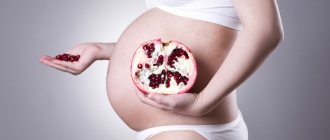What is Chlorhexidine used for?
An aqueous solution is prescribed to be taken in the following cases:
- cervical erosion;
- for the prevention of syphilis, genital herpes and other vaginal diseases;
- disinfection of dentures, disinfection of wounds;
- various diseases of the oral cavity.
An alcohol solution is used to treat hands and medical devices before surgery. The solution is also used to treat the working surface of medical equipment.
Vaginal suppositories are effective for the following conditions:
- in order to prevent infections that can be transmitted as a result of unprotected sexual intercourse;
- bacterial vaginosis;
- prevention of inflammation and infections before surgery, childbirth or abortion.
Chlorhexidine analogs
There are situations when the use of a medicine is contraindicated, so you need to know what can replace it. The most popular analogues of the product include:
All of them have an antiseptic, antimicrobial or anti-inflammatory effect and differ from Chlorhexidine in active ingredients. Hexicon is similar in composition (we recommend reading: Hexicon suppositories: instructions for use during pregnancy). It is solely the doctor’s responsibility to select a replacement, taking into account the individual characteristics and severity of the disease.
How to use Chlorhexidine in gynecology
The product is actively used to prevent sexually transmitted diseases. No later than 2 hours after unprotected intercourse, you need to take the solution. Men will need to insert 2 ml into the urinary canal, and women will need to insert 2 ml into the urinary canal and another 5-7 ml into the vagina. It is recommended to wipe the skin around the genitals with the solution. The instructions say that after using the drug you need to wait 2 hours before urinating. Otherwise, the effect of use will be less.
For preventive purposes, vaginal suppositories can be used.
Before using the product for thrush and other gynecological pathologies, you should consult a specialist in advance.
Instructions for use of Chlorhexidine during pregnancy
While carrying a child, the use of any medications, even safe ones, should be treated with caution. If possible, it is recommended to eliminate or reduce their consumption. In cases where the use of medications is unavoidable, it is important to control the dosage and follow all doctor’s recommendations during the treatment process, the specifics of which directly depend on the form of release of Chlorhexidine.
Using vaginal suppositories
Chlorhexidine suppositories are intended for insertion into the vagina 1-2 times a day. The duration of the usual course is 5-10 days, in some cases it can reach 20 days. Before inserting the candle, you should wash your hands, thoroughly rinsing them from soap, as it neutralizes the effect of the candle.
After removing the suppository from the shell, the suppository is inserted into the vagina in a lying position. It is recommended to lie down for a few minutes after the procedure. This is due to the fact that the candle melts quickly and can leak if you get up in a hurry. Then you need to wash your hands again to remove any remaining particles of the medicine. After inserting the suppository, you must also refrain from visiting the restroom for at least 2 hours.
How to properly gargle and rinse your nose with a solution?
Chlorhexidine solution is often prescribed for rinsing the mouth and throat and rinsing the sinuses. Indications for such appointments are:
- purulent sore throat;
- pharyngitis;
- tonsillitis;
- laryngitis;
- stomatitis.
Usually an undiluted solution with a concentration of 0.05% is prescribed. Before rinsing, rinse your mouth with warm water. Then take 1 teaspoon or tablespoon of solution into your mouth and rinse for 1-2 minutes. Chlorhexidine should not be swallowed; after the procedure, it must be completely spat out. It is not recommended to eat or drink for about an hour after this. The average duration of treatment is 7 days. The maximum period is 2 weeks.
The nasal rinsing procedure also has its own characteristics:
- carried out in a standing or sitting position;
- The nose should first be cleared of secretions and dry crusts;
- tilting your head, inject the medicine into each nostril one by one so that it flows back out without getting into the throat;
- repeat the procedure several times.
Rinse your nose 2 times a day for 7 days. The medicine can be diluted with saline solution in a 1:1 ratio.
Douching during pregnancy
Douching is the introduction of medicine into the vagina using an enema with a special tip. During pregnancy, such procedures should be carried out very carefully. The course of treatment lasts up to 10 days. Procedure:
- take a lying position;
- slowly insert the tip of the douche into the vagina;
- press the bulb, injecting the required amount of liquid;
- remain in a lying position for some time.
Contraindications and adverse reactions
Taking the drug is contraindicated in the following cases:
- increased susceptibility to the components included in the composition;
- patients with dermatitis;
- simultaneous use with other antiseptics, for example, hydrogen peroxide;
- in ophthalmology for washing the eyes.
It is better to refrain from using the product to disinfect the surgical field before or after surgery on the central nervous system and auditory canal.
In pediatrics, the drug is used with great caution.
Some patients may experience undesirable reactions such as:
- dry skin;
- allergic skin rashes;
- itching of the skin;
- light sensitivity.
With prolonged use of the product in dentistry, changes in taste may occur, tartar may appear, or teeth may become stained.
pharmachologic effect
Chlorhexidine is characterized by its versatility. By destroying the entire cell structure of pathogenic microorganisms, it leads to the rapid death of bacteria. The drug is stable, after treatment of the skin it remains on its top layer, continuing to have a bactericidal effect. In gynecology, in the form of vaginal suppositories, the product is effective for the treatment of the following diseases:
- syphilis and gonorrhea;
- trichomoniasis;
- thrush;
- chlamydia;
- gardnerellosis;
- ureaplasmosis.
Rinse your mouth with the solution and rinse your sinuses. As an antiseptic, it can be used to disinfect mucous membranes upon penetration of infectious microflora. Often the drug is prescribed as part of complex therapy, when treatment with antibacterial drugs is contraindicated, and for the purpose of prevention.
Features of oral hygiene in pregnant women
24.Jul.2017
During pregnancy, problems with the oral cavity increase the risk of developing various diseases for the expectant mother and baby. This can seriously affect the formation of the child’s vital systems. Bacteria that accumulate in the oral cavity enter the gastrointestinal tract. As a result, the immune system of the entire body is weakened. Frequent colds may appear, cardiovascular diseases begin to develop, and problems with the digestive organs arise.
Teeth during pregnancy: first visit to the dentist
Ideally, dental problems should be resolved before the planned pregnancy. But not everyone succeeds in this.
During pregnancy, it is better to postpone serious manipulations, such as caries treatment with anesthesia. Instead, talk to your doctor about the best toothpaste to use to stop tooth decay. In the case of deep damage to the tooth and the need for depulpation (removal of the nerve), you may be offered to install a temporary filling. In the first trimester, dental treatment during pregnancy should be as gentle as possible.
Teeth during pregnancy: treatment and prevention
A very important procedure during pregnancy is professional teeth cleaning. As a rule, the procedure lasts no more than 40 minutes. During this time, the dentist will have time to remove old tartar and plaque. Using special pastes and brushes, he will polish your teeth and cover them with protective varnish. The surface of the teeth will become clean. Smooth enamel will protect you from the new danger of developing caries.
During pregnancy, whitening procedures should not be performed. Teeth whitening comes with the risk of damaging the enamel. In most cases, this is contraindicated during pregnancy, when the load on the enamel is already increased. Teeth become especially sensitive during pregnancy, and the already unpleasant sensations can become very painful.
The second trimester of pregnancy is a suitable period for the treatment of shallow caries and gum inflammation. By this time, all the baby’s main organs have already been formed. The use of mild medications will not cause serious harm.
Teeth during pregnancy: smile more often!
Expectant mothers should choose brushes with medium-hard bristles. This will protect not only the gums from excessive bleeding, but also the sensitive enamel from micro-scratches. You will have to change your brushes more often than before, preferably every month. Your dentist will help you choose the right toothpaste.
A very useful item for comprehensive oral care is an irrigator. With its help, you can more thoroughly clean the hard-to-reach spaces between your teeth. The irrigator perfectly massages the gums, which is the best prevention against gingivitis, which often occurs in expectant mothers. The reason lies in hormonal changes. At the end of the first trimester, if the blood supply to the skin and mucous membranes deteriorates, the gums may suffer. If you notice swelling, bleeding, or pain, you should consult a doctor. In most cases, it will be enough to rinse your mouth with a medicated solution at home, apply ointment to the affected areas and use a soft-bristled brush.
Teeth during pregnancy: proper nutrition
To keep teeth healthy, the expectant mother must monitor her diet during pregnancy. A simple adjustment to your daily diet will do wonders.
Keeping a food diary is very useful. After finishing each meal, write down what you ate and drank in a notebook. At the end of the week, look through your diary and analyze how much protein, carbohydrates and fat you usually eat. You don't have to be a nutritionist to know if you're eating right. By eating a lot of baked goods, you end up with excess carbohydrates. And a lack of red meat, eggs, fish, and dairy products in the diet is a clear sign of an unbalanced diet.
| Dentist visit schedule: 1st visit: 6-9 weeks of pregnancy 2nd visit: 16-18 weeks of pregnancy 3rd visit: 26-28 weeks of pregnancy 4th visit: 36-38 weeks of pregnancy |
Teeth during pregnancy: mouth rinse
Make a decoction of string, chamomile, calamus and licorice rhizomes: place two tablespoons of the mixture in a saucepan, pour two cups of boiling water and simmer over low heat for 15 minutes. Strain and dilute with water to make a glass of liquid. Use after meals to treat and prevent gingivitis.
Indications and contraindications
The medication is often prescribed for various gynecological diseases:
- vulvovaginitis caused by microbes sensitive to the drug;
- for STIs, such as gonorrhea, syphilis, trichomoniasis, mycoplasmosis, genital herpes;
Chlorhexidine is also used in pre- and postpartum vaginal treatment, when treating the hands of medical workers before obstetric examination.
Chlorhexidine digluconate is often prescribed during pregnancy to rinse the mouth for dental problems:
- For diseases of the oral mucosa, including stomatitis of various etiologies, herpes, erosion, and candidiasis.
- In pathological processes affecting the gums - periodontal disease, gingivitis of pregnant women, periodontitis. Used in complex treatment.
- As prescribed by a dental surgeon after tooth extraction and other dental surgical interventions.
Chlorhexidine is widely used in the treatment of:
- tonsillitis;
- pharyngitis;
- laryngitis;
- tonsillitis.
The therapeutic effectiveness of eliminating these pathologies is achieved only with an integrated approach to the treatment of throat diseases, so it is important to adhere to the doctor’s recommendations. Carrying out inhalations or rinsing with Chlorhexidine without taking other medications may not lead to recovery, and sometimes even worsen the patient’s condition.
The solution has high activity against microorganisms, so Chlorhexidine can be used during pregnancy to treat many infectious diseases.
Contraindications:
- Individual intolerance.
- Dermatitis in various manifestations, since the drug can lead to aggravation of the disease.
- Doctors do not recommend using the drug simultaneously with other antiseptics.
- Chlorhexedine should not be used simultaneously with alkaline solutions and soap, as they neutralize its effect.
- Use with iodine-containing drugs is unacceptable due to their incompatibility.
Side effects
With long-term use of Chlorhexidine during pregnancy, there is a risk of developing negative manifestations:
- Temporary occurrence of enamel discolorations.
- Impaired taste perception due to the bitter taste of the drug.
- Dermatological reactions.
- Vaginal itching.
- The appearance of the symptom of “sticky palms”.
Cases of Chlorhexidine overdose do not occur in clinical practice, however, the solution should be used with caution by pregnant women who are hypersensitive to the active component due to the possible development of allergies.
Preparations for rinsing the nose for pregnant women
For the nasal rinsing procedure, various preparations are used: saline solution, a salt mixture made independently, and ready-made solutions based on sea water purchased at the pharmacy. Let's take a closer look at each option and evaluate their disadvantages and advantages.
- The saline solution consists of distilled water and sodium chloride (salt). There are no beneficial minerals in this mixture - only salt and water. Therefore, saline solution has a less pronounced therapeutic effect on the nasal mucosa than a solution based on sea salt.
- Some people make a saline solution for rinsing the nose for pregnant women at home by mixing table salt and water. Such mixtures may not bring the desired result, or may worsen the situation if the ratios are incorrectly selected. At home, it is difficult to verify the exact proportion. It is also difficult to ensure the sterility of a self-prepared mixture.
- A solution based on sea water, for example, the safe and proven drug Sialor® Aqua. This product is a sterile isotonic solution of sea water in the form of a Bufus® release with a closing function. Bufus is a sealed polymer container filled with a drug. Sialor® Aqua drops are safe, so they can be used not only by adults, but also by children from birth.
Nasal rinsing during pregnancy involves instilling 2-3 drops of Sialor® Aqua into the nasal cavity no more than 6 times a day. Microelements of sea water have an anti-inflammatory and restorative effect, increase the resistance of the mucous membrane to allergens, bacteria and viruses, and help cleanse the nasal cavity.
Can Chlorhexidine be used during pregnancy?
The drug does not have a negative effect on the female body, and also does not penetrate the hematoplacental barrier, so the drug does not reach the baby. Therefore, the answer to the question whether it is possible to gargle with Chlorhexidine during pregnancy is obvious. Also, the substance does not pose a threat to the development of the embryo when used in the first trimester of gestation.
In addition to use for throat diseases, you can rinse the mouth with Chlorhexidine during pregnancy, and also use it for antiseptic treatment of the external genitalia.











